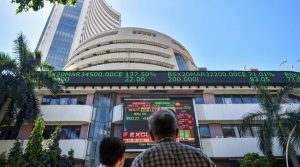What is Sensex?
The S&P BSE Sensex, is a stock market index in India. It consists of the 30 largest and most heavily traded stocks on the Bombay Stock Exchange (BSE). It is considered a barometer of the Indian economy and is used to provide a snapshot of the overall financial health of the market.
What is the full form of Sensex?
The full form of ” Sensex” is Stock Exchange Sensitive Index. BSE stands for Bombay Stock Exchange. You may have also heard of the “S&P BSE Sensex”. S&P stands for Standard & Poor’s, which is a financial services company that provides ratings, research, and analytics to investors around the world.
History of Sensex
It was first introduced in 1986 and was calculated based on the market capitalization of the 30 largest companies listed on the Bombay Stock Exchange. The index was initially composed of 100 stocks, but this was later reduced to 30 stocks to make it more representative of the overall market. In 1997, the index was modified to include only companies that met certain criteria, such as having a minimum level of liquidity and being representative of different sectors of the economy. Over the years, the methodology for calculating the Sensex has been refined and updated to ensure that it continues to provide an accurate representation of the Indian stock market.
How is Sensex calculated?
The Sensex is calculated using a market capitalization-weighted method, which means that the level of the index is determined by the total market value of the 30 component stocks. The value of each stock is determined by the number of shares outstanding multiplied by the current market price of the stock. The market capitalization of each stock is then calculated by multiplying the value of the stock by the number of shares outstanding. The market capitalizations of all 30 stocks are then added together to determine the total market capitalization of the Sensex. The value of the Sensex is then calculated by dividing this total market capitalization by a market value-weighted index divisor, which is used to ensure that the index is consistent over time.
How does a company get included in the Sensex?
In order to be included in the Sensex, a company must meet certain criteria, such as having a minimum level of market capitalization and liquidity, and being representative of different sectors of the economy. The selection process is performed by the Index Committee at the Bombay Stock Exchange (BSE), which reviews the eligibility of companies based on these criteria and makes recommendations for changes to the index. The composition of the Sensex is reviewed on a semi-annual basis, and changes to the index are typically made in June and December of each year.
What is the difference between Sensex and Nifty?
The S&P BSE Sensex and the Nifty 50 are both stock market indices in India. The Sensex is the older of the two, and it consists of 30 companies listed on the Bombay Stock Exchange (BSE). The Nifty 50, on the other hand, consists of 50 companies listed on the National Stock Exchange (NSE). Both indices are used as benchmarks for the overall performance of the Indian stock market.
Start investing through a platform that brings goal planning and investing to your fingertips. Visit Kuvera.in to discover Direct Plans and Fixed Deposits and start investing today.
#MutualFundSahiHai #KuveraSabs
Interested in how we think about the markets?
Read more: Zen And The Art Of Investing
You must have heard of the ‘bull’ and ‘bear’ phases in the stock market, checkout the video to find out what they represent.












